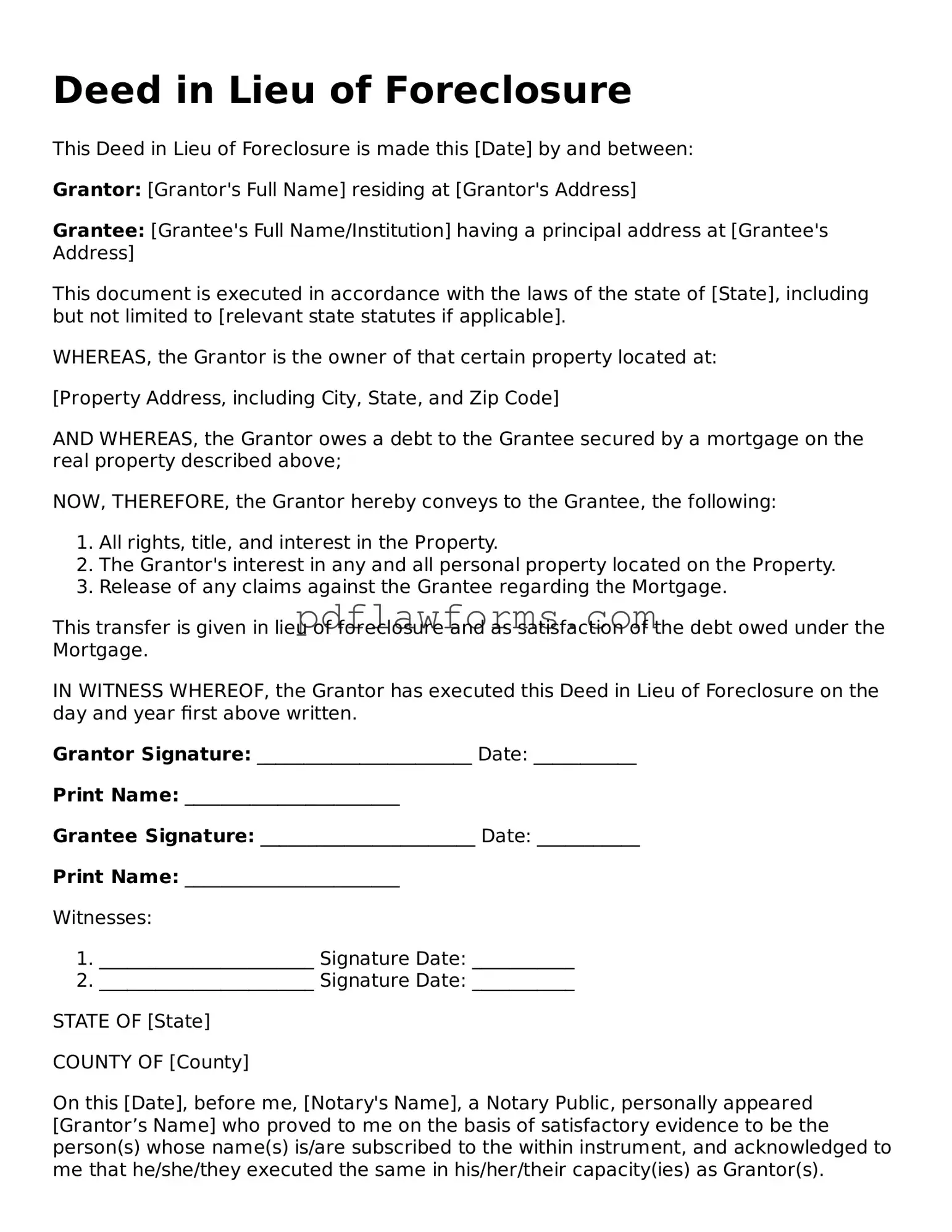Filling out a Deed in Lieu of Foreclosure form requires careful attention to detail. One common mistake is providing inaccurate property information. It is crucial to ensure that the address and legal description of the property are correct. Errors in this section can lead to complications in the future.
Another frequent error involves not including all necessary parties. All owners of the property must sign the deed. Omitting a co-owner can invalidate the document, causing delays and potential legal issues.
Many individuals overlook the importance of obtaining the lender's approval before submitting the deed. A Deed in Lieu of Foreclosure should not be executed without the lender's consent. Failing to do so may result in unexpected consequences, including continued liability for the mortgage.
Some people neglect to seek legal advice when completing the form. While it may seem straightforward, the implications of a Deed in Lieu of Foreclosure can be significant. Consulting with a legal professional can provide clarity and help avoid costly mistakes.
Additionally, individuals sometimes forget to include a statement of intent. Clearly stating the purpose of the deed can help prevent misunderstandings. This statement can clarify that the transfer is voluntary and intended to satisfy the mortgage obligation.
It is also common for individuals to skip the notarization process. A Deed in Lieu of Foreclosure typically requires notarization to be legally binding. Failing to have the document notarized can render it ineffective.
Another mistake is not retaining a copy of the completed form. Keeping a record of all submitted documents is essential for future reference. This can be helpful if any disputes arise after the transfer.
Many individuals do not fully understand the tax implications of executing a Deed in Lieu of Foreclosure. It is important to consult with a tax professional to understand potential consequences. This oversight can lead to unexpected financial burdens.
Lastly, some people rush through the process without reviewing the document thoroughly. Taking the time to read and understand the form can prevent errors. A careful review ensures that all information is accurate and complete.
